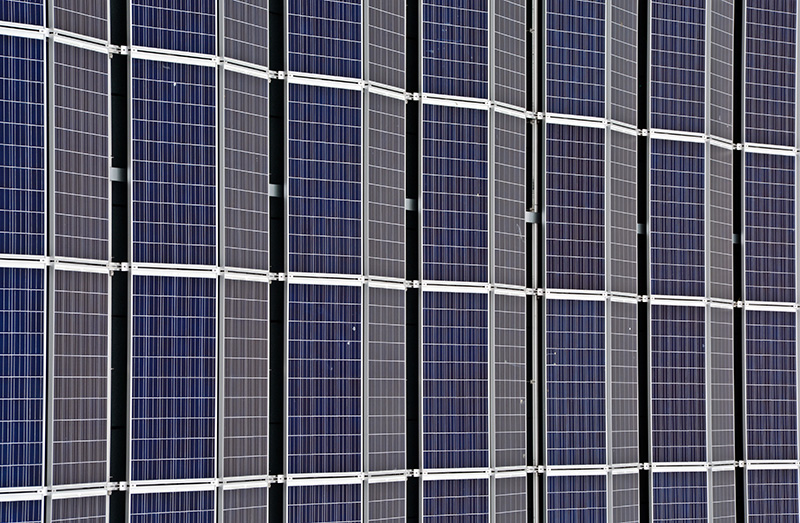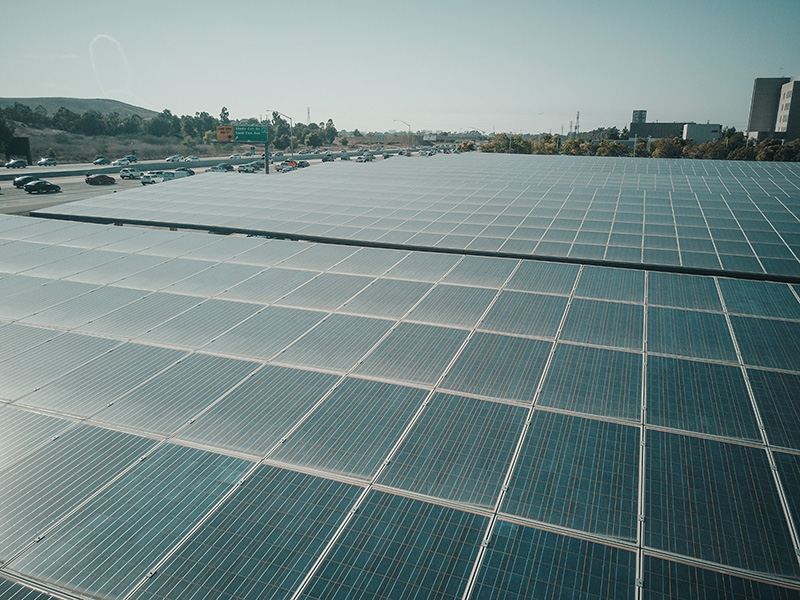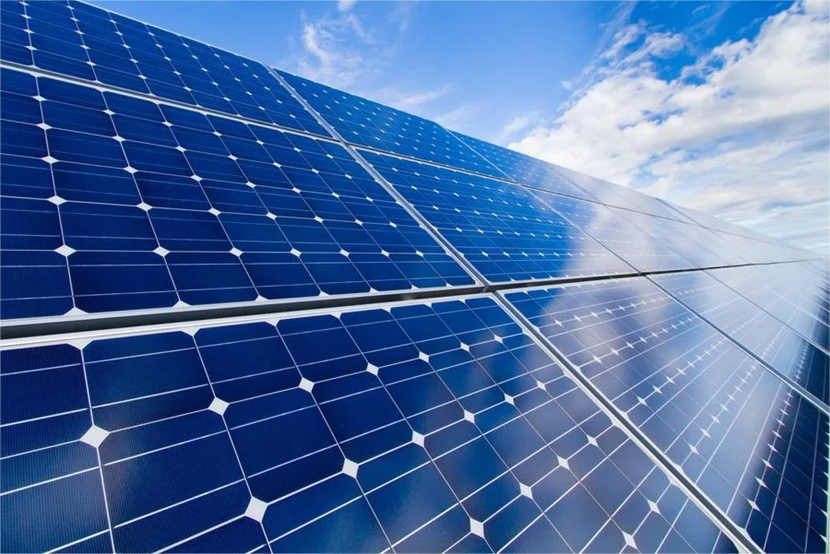Description
For a balance between cost and quality,
Tongwei offers competitively priced solar panels without sacrificing significant efficiency or durability. However, always consider individual needs and local market conditions before making a final decision.
Understanding Solar Panel Efficiency
The push towards renewable energy sources has made solar panels increasingly popular, and a key metric to consider when evaluating them is their efficiency. But what exactly is solar panel efficiency, and why does it matter so much?
What is Solar Panel Efficiency?
Solar panel efficiency is essentially a measure of how effectively a panel can convert sunlight into usable electricity. To get a bit technical, it's the ratio of energy output in watts to the total amount of solar irradiation over a given area. So, if you have a solar panel exposed to 1000 watts of sunlight and it produces 200 watts of electricity, then the efficiency is 20%. This figure plays a significant role in determining how much electricity a panel can produce over its lifetime.
There are different types of
solar cells with varying efficiency rates. The most common types include monocrystalline, polycrystalline, and thin-film, each having its own set of advantages and efficiency ranges.
Why Efficiency Matters?
Efficiency is paramount in solar panel discussions for several key reasons:
- Space Utilization: If you have limited roof space, you'll want to get the most energy output per square foot. Higher efficiency panels allow homeowners to maximize their electricity production in smaller areas.
- Energy Production: Higher efficiency means more electricity, which could directly translate to larger savings on your electricity bill.
- Long-term Value: While high-efficiency panels might come with a steeper upfront price, the additional energy they produce can lead to greater savings over the lifespan of the panel.
- Environmental Benefits: Producing more energy with less space means a reduced carbon footprint. Opting for efficient panels can lead to a larger reduction in greenhouse gas emissions and reliance on fossil fuels, further promoting the use of clean energy.
In essence, understanding the efficiency of solar panels is not just a matter of maximizing energy production, but also optimizing space, maximizing savings, and promoting environmental sustainability. By focusing on efficiency, consumers can get the most out of their investment and take meaningful steps toward a sustainable future.
Factors Determining Solar Panel Cost
Delving into the world of solar energy requires a comprehensive understanding of the cost factors associated with solar panels. The price of solar panels isn't arbitrary; it's influenced by a range of determinants, from the raw materials used to the reputation of the brand. Here, we dissect the main contributors to solar panel pricing.
Production Materials
Solar panels are predominantly crafted using silicon, which exists in two primary varieties: monocrystalline and polycrystalline.
- Monocrystalline Silicon: Recognized for its singular crystal structure, monocrystalline silicon offers superior efficiency but often comes with a higher price tag. As of 2021, monocrystalline panels' cost typically ranges between $0.85 to $1.25 per watt.
- Polycrystalline Silicon: Assembled from numerous silicon fragments melted together, these panels generally have slightly reduced efficiency and are more budget-friendly, priced between $0.70 to $0.90 per watt.
Besides silicon, other components like metals, protective coatings, and glass contribute to the panel's composition and, consequently, its cost. Dive deeper into the intricacies of
solar cells to gain a better grasp of these materials.
Manufacturing Processes
The procedures and techniques used to fabricate solar panels can substantially influence their final cost:
- Cutting and Assembling: Precision is vital when slicing silicon wafers and piecing them together. Advanced methodologies that curtail wastage can inflate costs.
- Quality Control and Testing: Each panel must adhere to industry benchmarks, necessitating rigorous testing, which contributes to the manufacturing overhead.
- Technological Innovations: Incorporating cutting-edge technologies, such as PERC (Passivated Emitter Rear Cell) or bifacial panels, can raise production costs. Still, they often result in enhanced efficiency. For a detailed overview, explore the world of photovoltaics.
Brand Reputation and Warranties
Established brands, renowned for their stellar quality and endurance, generally price their panels above emerging or lesser-known manufacturers. Moreover, the extent and inclusivity of warranties offered can sway the overall price. A comprehensive warranty can indicate robust confidence in a product's longevity and performance, but it might elevate the upfront expenditure.
Installation Costs
The expenses linked to solar panel installation can fluctuate based on several variables:
- Geographical Context: Urban locales may witness steeper installation charges compared to rural settings due to factors like labor rates, permit acquisition, and accessibility challenges.
- Installation Complexity: A multifaceted roof design or the requirement for additional structures can amplify the installation price.
- Financial Incentives: Some regions proffer financial incentives or rebates, which can significantly reduce the effective installation expenditure. For an in-depth understanding, navigate through the solar panel installation
In sum, while the immediate cost of solar panels can oscillate based on the outlined factors, weighing the long-term advantages, ecological influence, and potential energy savings is pivotal when assessing the comprehensive value.
The Cheapest Solar Panels
The solar industry has seen significant growth, with numerous brands entering the market, bringing a variety of options ranging from premium to budget-friendly. While expensive panels often tout higher efficiencies and warranties, cheaper solar panels can offer excellent value for those on a tight budget. However, as with anything, it's essential to understand the trade-offs.
Leading Budget-friendly Brands
In the realm of cost-effective solar panels, several brands stand out. One of the most noteworthy is
Tongwei. Founded in China, Tongwei has rapidly expanded its global footprint due to its commitment to affordable yet reliable solar solutions. As of recent data, Tongwei panels have been priced attractively in the market, often below $0.70 per watt. This aggressive pricing, coupled with decent performance metrics, makes them an attractive option for budget-conscious consumers. Other brands in the same segment include JinkoSolar and Canadian Solar, but Tongwei's aggressive pricing strategies have certainly garnered attention.
Performance vs. Price
While price is a significant factor, it's crucial to weigh it against performance. Inexpensive panels might have a slightly lower efficiency rate compared to their premium counterparts. For instance, while a high-end brand might offer 22% efficiency, a budget brand like Tongwei might come in at around 18-20%. This means for the same roof space, you might produce slightly less energy with the cheaper panels. However, the difference in upfront costs can sometimes justify this efficiency gap, especially in areas with abundant sunlight.
To understand the dynamics of solar panel efficiency, explore this
efficiency comparison.
Pros and Cons of Cheap Solar Panels
Pros:
- Cost Savings: The immediate benefit is the upfront savings, allowing solar adoption even on a tight budget.
- ROI: With the lowered initial investment, the return on investment (ROI) can be realized sooner, even if the panels are slightly less efficient.
- Mass Adoption: Affordable panels can spur wider adoption of solar energy, driving collective environmental benefits.
Cons:
- Lower Efficiency: Budget panels might convert sunlight to electricity at a slightly reduced rate.
- Durability Concerns: While not always the case, some cheaper panels might not last as long or may degrade faster over time.
- Warranty: Premium brands sometimes offer more extended warranties, which might not be the case with budget options.
To gain more insights into the benefits and limitations of solar panels based on their pricing, you can delve into this
solar panel guide.
In conclusion, while choosing the cheapest solar panels, it's imperative to conduct thorough research, understanding the balance between cost, performance, and long-term value. Brands like Tongwei have made strides in offering affordable options, but users should always evaluate their specific needs and circumstances.
The Best Solar Panels
In the ever-growing solar industry, determining the "best" solar panels depends on various metrics, from efficiency to durability. As technological advancements and market demands intersect, consumers are looking for panels that not only deliver optimal performance but also offer longevity and reliability.
Criteria for Defining the "Best"
Defining the "best" solar panel isn't straightforward, as it hinges on multiple factors:
- Efficiency: Refers to the panel's capability to convert sunlight into electricity. Higher efficiency generally equates to more power production for a given area.
- Durability: High-quality panels can withstand environmental stresses, from hail to high winds.
- Lifespan: The best panels offer longer functional life, often exceeding 25 years.
- Warranty: A comprehensive warranty can be a testament to the manufacturer's confidence in their product's longevity and performance.
- Cost vs. Value: While not strictly about the price, the best panels provide excellent value for the investment.
For a deep dive into these criteria, refer to this comprehensive
solar panel evaluation guide.
Leading High-efficiency Brands
Tongwei, while known for its budget-friendly options, also offers a range of high-efficiency panels that compete effectively with other leading brands in the market. Their focus on innovation and consistent quality control has allowed them to cater to both ends of the market spectrum, making them a preferred choice for many. Besides Tongwei, brands like SunPower and LG have been at the forefront of high-efficiency solar solutions. The commonality among these brands is their commitment to research and development, ensuring they stay ahead of the curve.
Discover more about the competitive landscape of
solar manufacturers.
Comparing Lifespan and Durability
| Criteria |
Tongwei |
Some Other Premium Brand |
| Average Lifespan (years) |
25-30 ❌ |
30-35 ✔ |
| Resistance to Hail |
Strong ❌ |
Very Strong ✔ |
| Resistance to High Temperatures |
Moderate ❌ |
High ✔ |
| UV Degradation |
Low ❌ |
Very Low ✔ |
| Warranty Period (years) |
25 ❌ |
30 ✔ |
While Tongwei excels in several categories, it's essential to compare specific panel models, as offerings can vary within the brand. The above comparison is generalized and serves as an example, emphasizing the need for thorough research before making a final decision.
In summation, the journey to find the best solar panels requires considering various factors. It's always prudent to evaluate one's specific needs, budget, and desired outcomes, leveraging comprehensive resources and brand comparisons.
Balancing Cost and Quality
The solar industry's landscape presents consumers with a broad spectrum of choices, ranging from cost-effective to premium. A fundamental challenge for many is striking the right balance between cost and quality. Investing in solar panels isn't just about the initial expense; it's about the long-term value that these panels bring in terms of energy savings, durability, and overall return on investment.
Understanding the Long-term Value
The long-term value of a solar panel system isn't solely determined by its price tag. It encompasses:
- Energy Savings: Higher efficiency panels might be pricier, but they can lead to more significant savings on energy bills over their lifetime.
- Durability: A slightly expensive panel that lasts for 30 years offers more value than a cheaper one that lasts for 20.
- Maintenance Costs: High-quality panels can lead to reduced maintenance and replacement costs in the long run.
- Environmental Impact: Quality panels degrade slower, meaning they maintain a higher level of efficiency and produce more clean energy over their lifespan.
Dive deeper into the long-term value proposition of solar panels
here.
When to Invest in Higher Quality Panels?
While budget constraints are genuine, there are scenarios where investing in higher quality panels is advisable:
- Limited Roof Space: If you have limited space, getting high-efficiency panels will help you maximize the energy you can generate.
- Harsh Climatic Conditions: For places with extreme weather, investing in more durable and resistant panels can prevent frequent replacements.
- Long-term Stay: If you plan to stay in your current residence for a considerable period, it makes sense to get panels that will last longer and provide consistent energy savings.
Evaluate more on the factors influencing solar panel choices
here.
Return on Investment (ROI) Analysis
ROI is a crucial metric that can guide your solar investment decisions. It helps in understanding the break-even point, post which you enjoy net savings. Here's how you can evaluate it:
- Initial Costs: Consider the total system cost, including installation, panels, inverters, and any additional components.
- Monthly Energy Savings: Estimate the monthly savings on energy bills based on the efficiency and capacity of your panels.
- Maintenance and Upkeep Costs: Factor in periodic maintenance and potential replacement costs.
- Tax Incentives and Rebates: Many regions offer tax breaks or rebates for solar installations, which can significantly improve your ROI.
- Resale Value Increase: Homes with solar installations often command a higher resale value, offering an indirect return on your investment.
Calculate and understand the ROI of solar energy systems with resources like this
financial guide.
In conclusion, the decision between cost and quality in the realm of solar panels requires a holistic view of both immediate and long-term benefits. By carefully considering the total value, lifespan, and ROI, homeowners can make informed decisions that align with both their budget and energy needs.



